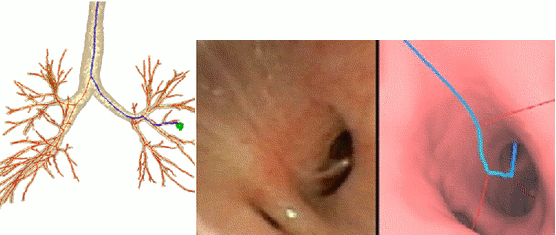Jason D. Gibbs, Michael W. Graham, Rebecca Bascom, Duane C. Cornish, Rahul Khare, and William E. Higgins, Pennsylvania State University
Volume: 61, Issue, 3, Page: 638-657

Summary: With the development of multi-detector computed tomography (MDCT) scanners and ultrathin bronchoscopes, the use of bronchoscopy for diagnosing peripheral lung-cancer nodules is becoming a viable option. The work flow for assessing lung cancer consists of two phases: (1) 3D MDCT analysis; and (2) live bronchoscopy. Unfortunately, the yield rates for peripheral bronchoscopy have been reported to be as low as 17%, and bronchoscopy performance varies considerably between physicians. Recently proposed image-guided systems have shown promise for assisting with peripheral bronchoscopy. Yet, MDCT-based route planning to target sites has relied on tedious error-prone techniques. In addition, route planning tends not to incorporate known anatomical, device, and procedural constraints that impact a feasible route. Finally, existing systems do not effectively integrate MDCT-derived route information into the live guidance process. We propose a system that incorporates an automatic optimal route-planning method, which integrates known route constraints. Furthermore, our system offers a natural translation of the MDCT-based route plan into the live guidance strategy via MDCT/video data fusion. An image-based study demonstrates the route-planning method’s functionality. Next, we present a prospective lung-cancer patient study in which our system achieved a successful navigation rate of 91% to target sites. Furthermore, when compared to a competing commercial system, our system enabled bronchoscopy over two airways deeper into the airway-tree periphery with a sample time that was nearly two minutes shorter on average. Finally, our system’s ability to almost perfectly predict the depth of a bronchoscope’s navigable route in advance represents a substantial benefit of optimal route planning.

